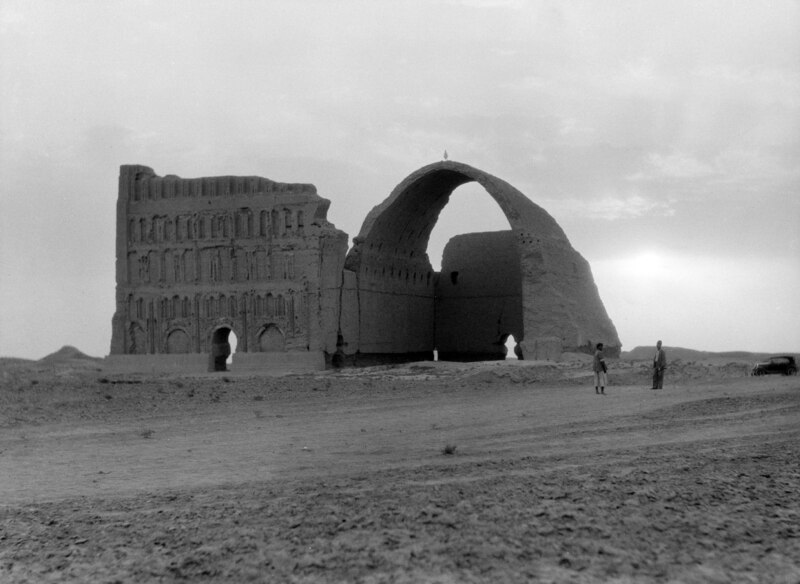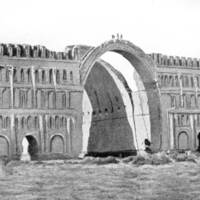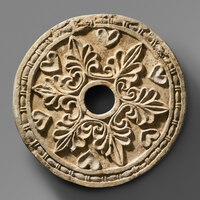Remains of Ctesiphon
Date:
Sixth century
Location or Findspot (Modern-Day Country):
Iraq
Dimensions:
The iwan is 35 m high and over 43 m deep
Description:
The city of Ctesiphon, located on the east bank of the Tigris River in modernday Iraq, was the Partho-Sasanian capital from the second century BCE until the Muslim conquest of 637 CE. It was one of the most important cultural centers of the Sasanian empire, but the only visible remains of it are the enormous iwan and part of the adjacent walls. Known as Taq-i Kisra or Taq-e Kasra, the iwan of Khosrow I (r. 531–79) was part of a royal palace that also included stucco decoration, marble, cut stone, and mosaics. The photos of the iwan here, from 1864 and 1932, show it before and after the collapse of the right-hand facade. There have been additional partial collapses in recent years.
Stucco roundels were uncovered during excavations around the palace. Mold-made stucco tiles were found in the reception rooms of elite houses in and near Ctesiphon.
Stucco roundels were uncovered during excavations around the palace. Mold-made stucco tiles were found in the reception rooms of elite houses in and near Ctesiphon.
Relevant Textbook Chapter(s):
3
Repository and Online Resources:
• For recent news and projects related to the iwan, visit the Taq-e Kasra Project.
• Read about the Metropolitan Museum's excavations at Ctesiphon.
Image Credits:
Wikimedia Commons, Metropolitan Museum of Art





